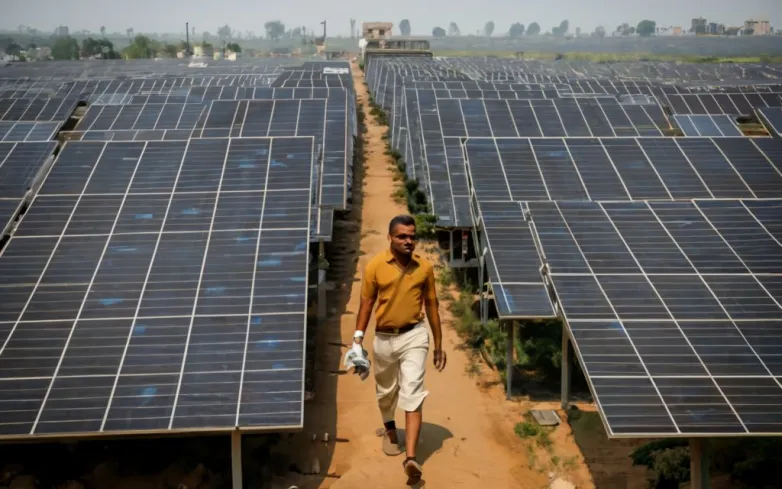India's $9 Billion Rooftop Solar Push to Energize Millions
- India's ambitious plan to power 10 million homes with rooftop solar panels aims to boost the renewable industry, but cost barriers and loan rates may hinder progress.

India plans to invest $9 billion to power 10 million homes with rooftop solar panels in an effort to boost the country's renewable industry. The sluggish deployment of rooftop systems has raised doubts about India's target of quadrupling solar power generation capacity by the end of the decade. Prime Minister Narendra Modi aims to accelerate the solar-power rollout through subsidies and cheaper loans. The installations will also allow users to sell surplus electricity back to the grid, providing each household with 300 kilowatt hours of free power per month.
The investment is part of Modi's plan ahead of the upcoming national elections, where he is seeking a third term as prime minister. India aims to install 40 gigawatts of rooftop solar capacity by 2026, following a strategy similar to China's to drive down energy prices. However, the cost of installations has been a barrier for small households, and the loan rates offered by banks may still be too expensive for many households.
How is India planning to boost its renewable industry and achieve its solar power generation target?
- India plans to invest $9 billion to power 10 million homes with rooftop solar panels.
- Prime Minister Narendra Modi aims to accelerate the solar-power rollout through subsidies and cheaper loans.
- The installations will allow users to sell surplus electricity back to the grid, providing each household with 300 kilowatt hours of free power per month.
- The investment is part of Modi's plan ahead of the upcoming national elections.
- India aims to install 40 gigawatts of rooftop solar capacity by 2026.
- India is following a strategy similar to China's to drive down energy prices.
- The cost of installations has been a barrier for small households.
- The loan rates offered by banks may still be too expensive for many households.
Also read
- Poland funds eight energy clusters, thousands of rooftop solar installs
- Agile Energy Secures Equity for 200MW Australian Solar-Plus-Storage
- Bahrain’s Record Rooftop Solar Powers Steel Decarbonization
- New Solar Drain Clip Aims to Improve Panel Efficiency in Humid Climates
- PosiGen bankruptcy spotlights US rooftop solar’s financing and policy fragility


